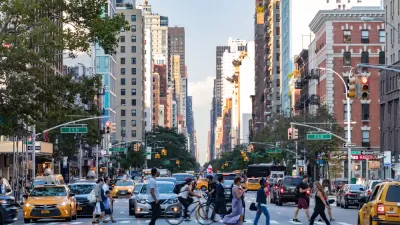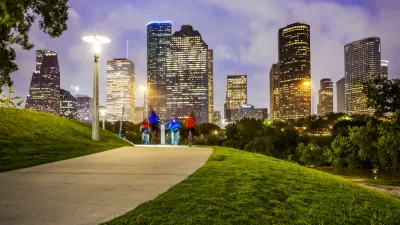One blogger makes the case for walkable urbanism, in the context of the social and physical well-being of adolescents specifically.
"The subdivision I grew up in had a couple other kids that were in my age range. I was lucky. Outside of the subdivision, there was nothing else in walking distance. The roads to get there had no shoulder, either. As much as I liked the other guys in the subdivision, they weren't my best friends. If I wanted to see friends from school, my parents had to drive. Once again, I was lucky that my parents had time for frequent trips to friends' houses, as long as I gave them ample notice and they talked to my friends' parents. However, that's a lot of big "ifs." It's silly that a parent must devote time, energy, and money from gasoline, insurance and car depreciation every time two kids want to play video games or kick a soccer ball together.
A pick-up soccer, football, or basketball game was even more complicated. We couldn't just go down to the local field and play with whatever kids were hanging around looking for a game. Instead, we had to call guys who lived in distant subdivisions and talk to their parents about car transportation. If anyone's parents weren't around, or were too busy to take an hour out of their day to drive their child to a pick-up football game, we couldn't play. Since organizing required effort, we'd only call our friends. This deprived us and other adolescents of a major social lesson: getting along with people other than your friends."
FULL STORY: It takes a village: why walkable urbanism is good for adolescents

Study: Maui’s Plan to Convert Vacation Rentals to Long-Term Housing Could Cause Nearly $1 Billion Economic Loss
The plan would reduce visitor accommodation by 25,% resulting in 1,900 jobs lost.

North Texas Transit Leaders Tout Benefits of TOD for Growing Region
At a summit focused on transit-oriented development, policymakers discussed how North Texas’ expanded light rail system can serve as a tool for economic growth.

Why Should We Subsidize Public Transportation?
Many public transit agencies face financial stress due to rising costs, declining fare revenue, and declining subsidies. Transit advocates must provide a strong business case for increasing public transit funding.

How to Make US Trains Faster
Changes to boarding platforms and a switch to electric trains could improve U.S. passenger rail service without the added cost of high-speed rail.

Columbia’s Revitalized ‘Loop’ Is a Hub for Local Entrepreneurs
A focus on small businesses is helping a commercial corridor in Columbia, Missouri thrive.

Invasive Insect Threatens Minnesota’s Ash Forests
The Emerald Ash Borer is a rapidly spreading invasive pest threatening Minnesota’s ash trees, and homeowners are encouraged to plant diverse replacement species, avoid moving ash firewood, and monitor for signs of infestation.
Urban Design for Planners 1: Software Tools
This six-course series explores essential urban design concepts using open source software and equips planners with the tools they need to participate fully in the urban design process.
Planning for Universal Design
Learn the tools for implementing Universal Design in planning regulations.
City of Santa Clarita
Ascent Environmental
Institute for Housing and Urban Development Studies (IHS)
City of Grandview
Harvard GSD Executive Education
Toledo-Lucas County Plan Commissions
Salt Lake City
NYU Wagner Graduate School of Public Service





























